Sprouting lentils at home is easy to do and they make a nutritious addition to sandwiches, salads, and wraps. You don’t need much in the way of equipment for sprouting lentils, either. Follow these instructions & you’ll be eating sprouted lentils in a matter of days.
Originally published in March 2018; this post has been updated.
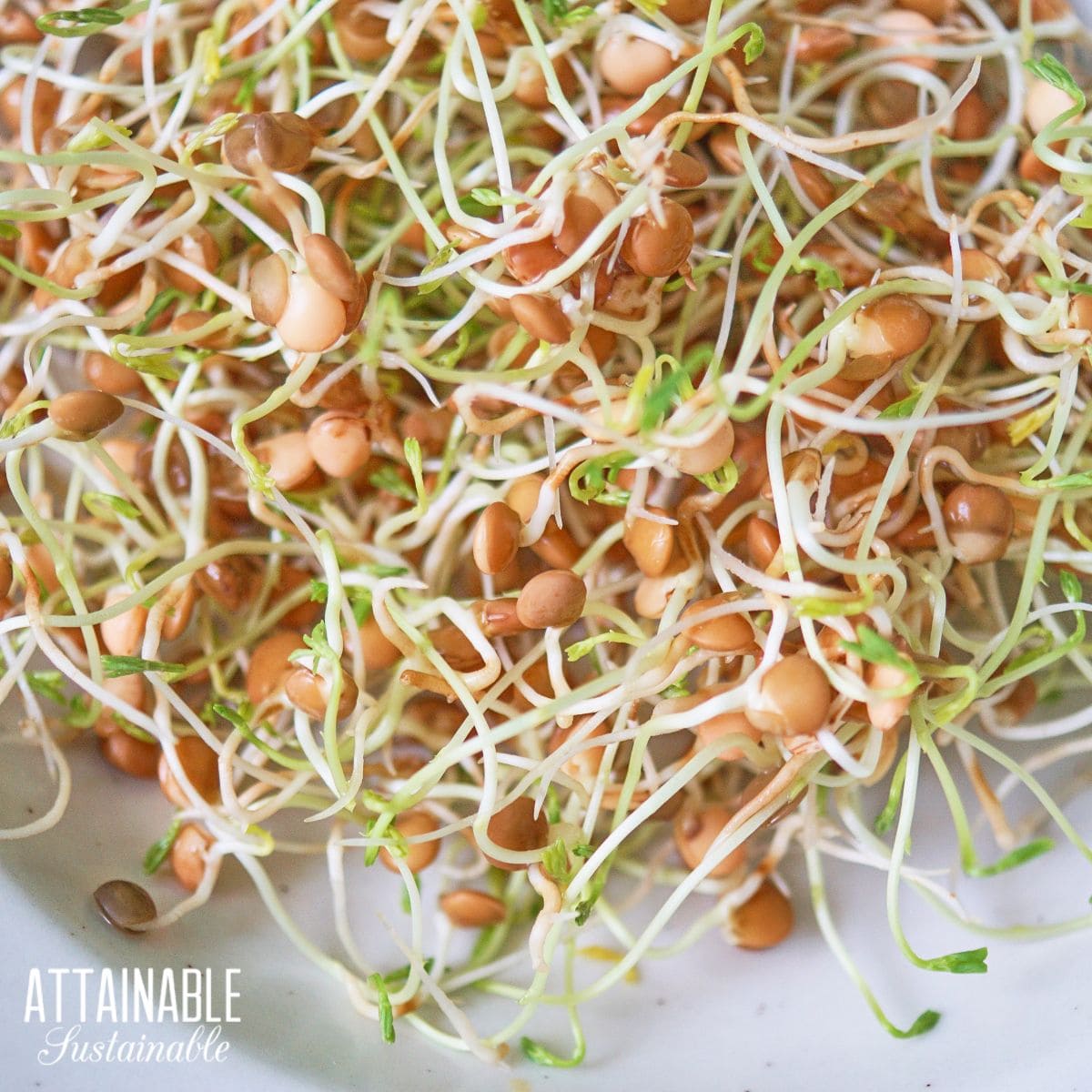
Sprouting seeds isn’t just for the garden but much like gardening and fermentation, it can be a tool of both nourishment and sustainability. You can spend minimal time in the kitchen creating sprouted, living foods with just seeds and water.
Lentils are a legume belonging to the pea family. They’re not commonly available in their fresh form. Instead, you’ll find them on the grocery store shelf with the dried beans.
You’ll find lentils in green, brown, puy (slate grey), and red. Dry lentils are used in a variety of cuisines including Indian, Italian, French and more. They’re the basis of one of our favorite soups as well. But you don’t always have to cook lentils in order to enjoy them as part of your diet.
Grow Some Greens!
Ready to grow fresh greens, no matter WHERE you live? Sign up for my
FREE quick-start guide and start growing some of your own food!
Lentils and other legumes are particularly good to start sprouting as they are economical as well as commonly found in many pantries.
Sprouting Lentils
Sprouting lentils before cooking them or adding them to salads enhances their nutrition in several ways. First of all, it is thought that sprouted lentils are easier to digest. In fact, sprouting makes many seeds more digestible.
All seeds contain compounds that protect them from the elements. They want to hold onto their nutrients and energy until all of the elements of sprouting – moisture and warmth – are available to them. That protects them in dormancy, but those enzyme inhibitors also make them harder to digest.
Secondly, protein is generally increased during sprouting while carbohydrates are generally decreased.
Micronutrients such as B vitamins are enhanced as is the bioavailability of some minerals. While many do not recommend a diet high in raw legumes, even sprouted, sprouted lentils can be eaten raw in reasonable quantities and provide enzymes when you do so.
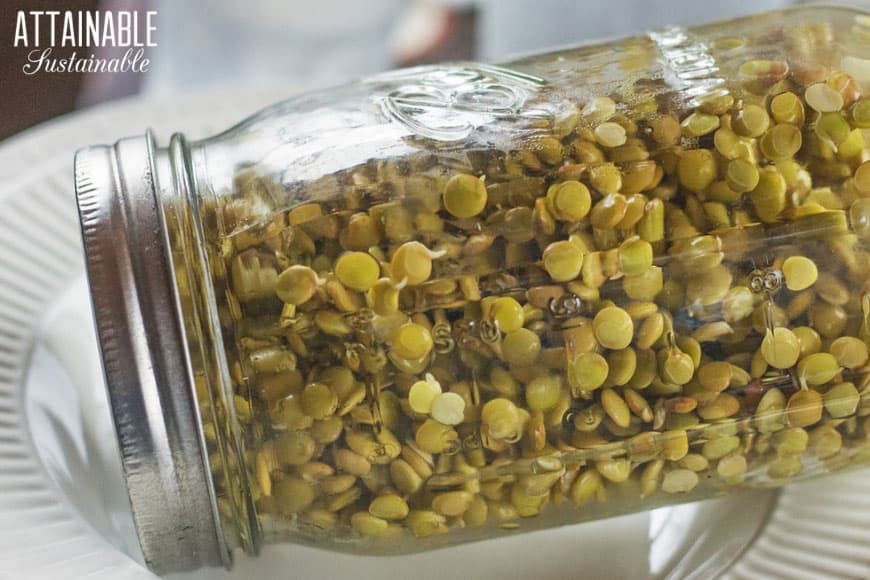
How to Sprout Lentils
Sprouting lentils starts with the dry legume. Before they can sprout, they need to be soaked. This is a good step to do overnight. Growing sprouts require a few minutes of your time, morning and night, when you’ll rinse and drain them. Other than that, there’s little hands-on time required.
Start by soaking a cup of dried lentils in water for 8-12 hours. Drain and rinse the lentils, then invert the jar in a bowl and allow sit at room temperature for another 12 hours.
Rinse the lentils and drain, again letting them sit for 12 hours. Repeat this cycle every 12 hours until you begin to see tiny lentil sprouts appear from the lentils.
When the smallest of sprouts begin to appear, you can use the sprouted lentils in soups and stews. To eat them raw on salads or sandwiches, allow the lentils to sprout for two-to-three more days.
FAQs
How long does it take for lentils to sprout?
This can depend somewhat on the conditions you provide, but you’ll start to see the earliest sprouts in just a couple of days and they’ll be ready to eat in four or five days.
How long are these sprouts good for?
Once you deem them ready to eat, keep sprouted lentils in the fridge for up to a week.
★ Did you love this recipe? Be sure to give it a star rating below! ★

Sprouted Lentils
Equipment
- 1 quart sized jar
- 1 sprouting lid - see notes
- 1 canning ring
Ingredients
- 1 cup lentils
- 3 cups water
Instructions
- First, add one cup dried lentils (any variety) and 3 cups water to a quart-sized jar fitted with a sprouting lid and canning ring. (See notes.) Leave this to soak for 8-12 hours.
- Drain the soaking water from the lentils by inverting the jar over the sink (or plant that needs watering). Rinse the lentils by adding approximately two cups of water to the jar, swirling, and draining again.
- Invert the jar at a 45 degree angle in a bowl. Leave it on your counter out of direct sunlight to rest for another 12 hours. Repeat rinsing and draining as stated above.
- Repeat the cycle of rinse, drain, rest for 12 hours until you see tiny tails beginning to emerge from the lentils, approximately 2-3 days. The lentils can be used at this point in soups and stews and the sprouts are completely undetectable to the palate.
- You can continue to sprout the lentils an additional two days, approximately, for longer sprouts. If the lentils have completely filled the jar by this point, simply divide the volume of lentils between two jars and continue sprouting. These are well-suited to being used in raw salads, as a raw, crunchy topping for soups, or in a quick stir-fry, much like mung bean sprouts.
Notes
- Once sprouted to your preference, lentils should be eaten that day or stored in the refrigerator for 2-3 days before consuming. To keep a perpetual stock of sprouted lentils up, begin soaking another jar every 2-3 days.
- You can make your own sprouting lid for pennies. Simply place a wide-mouth jar upside down on some polyester window screen and trace around it. Cut out this circle and adjust if necessary to fit snugly inside a mason jar ring. Alternatively, you can use several layers of cheesecloth.
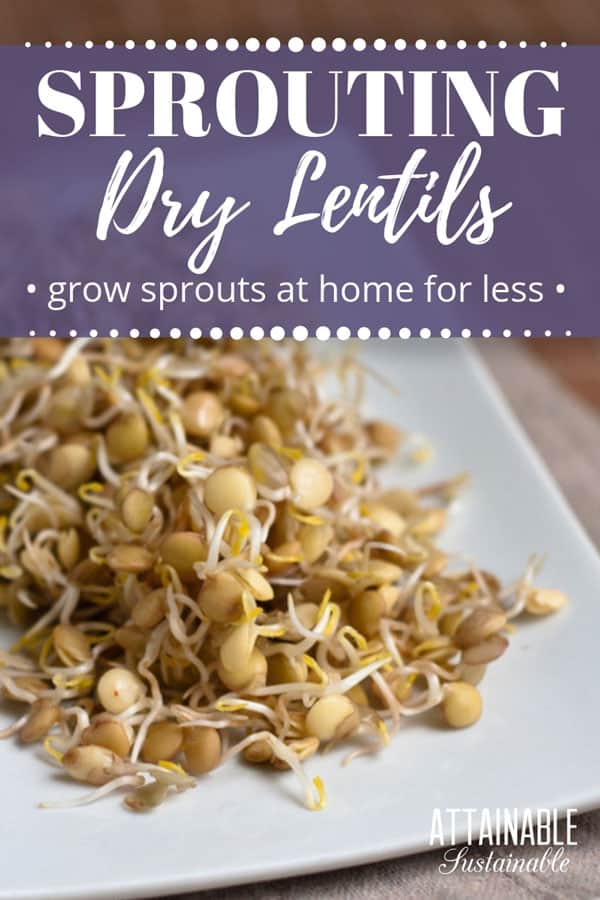

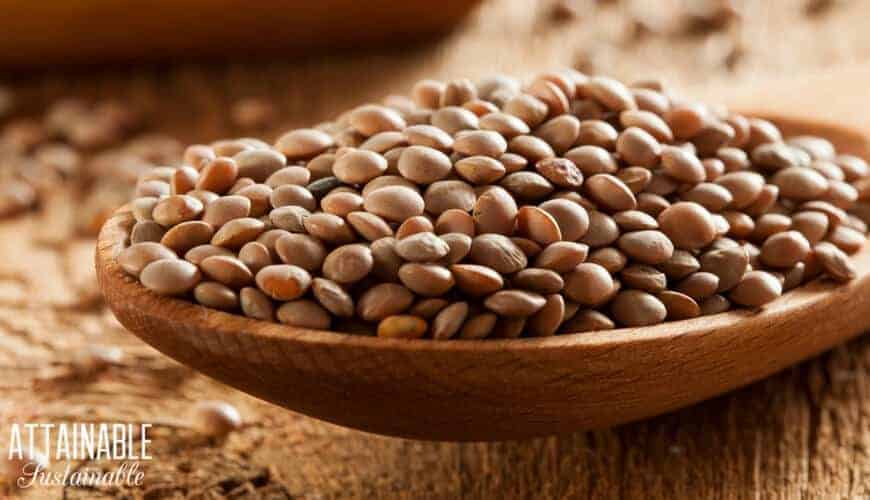
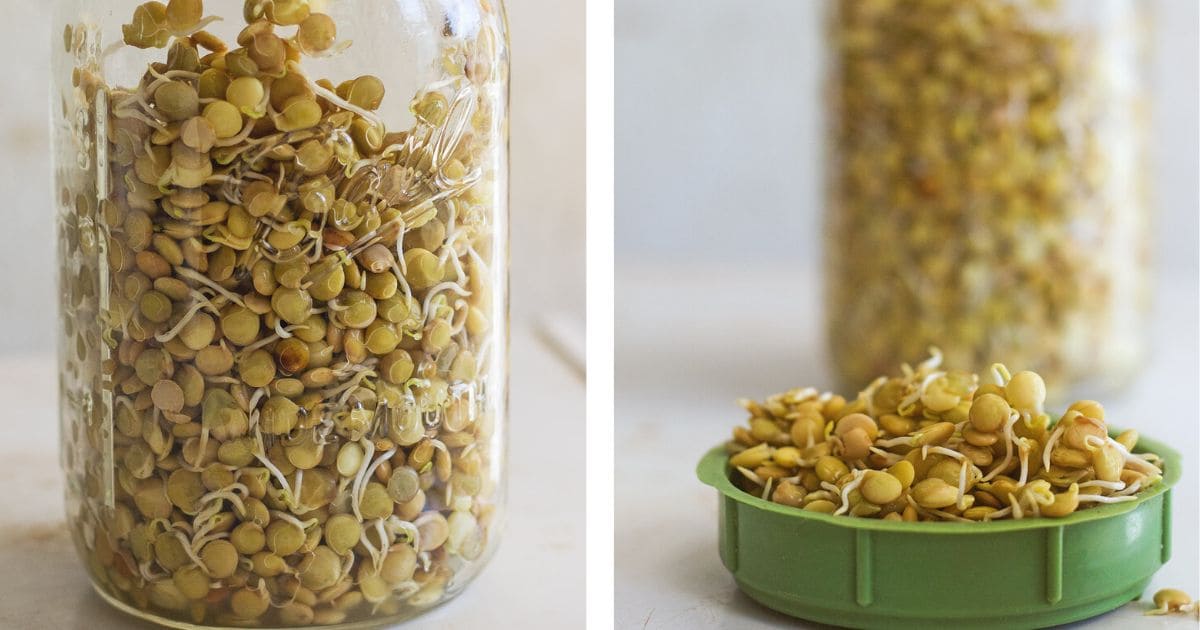
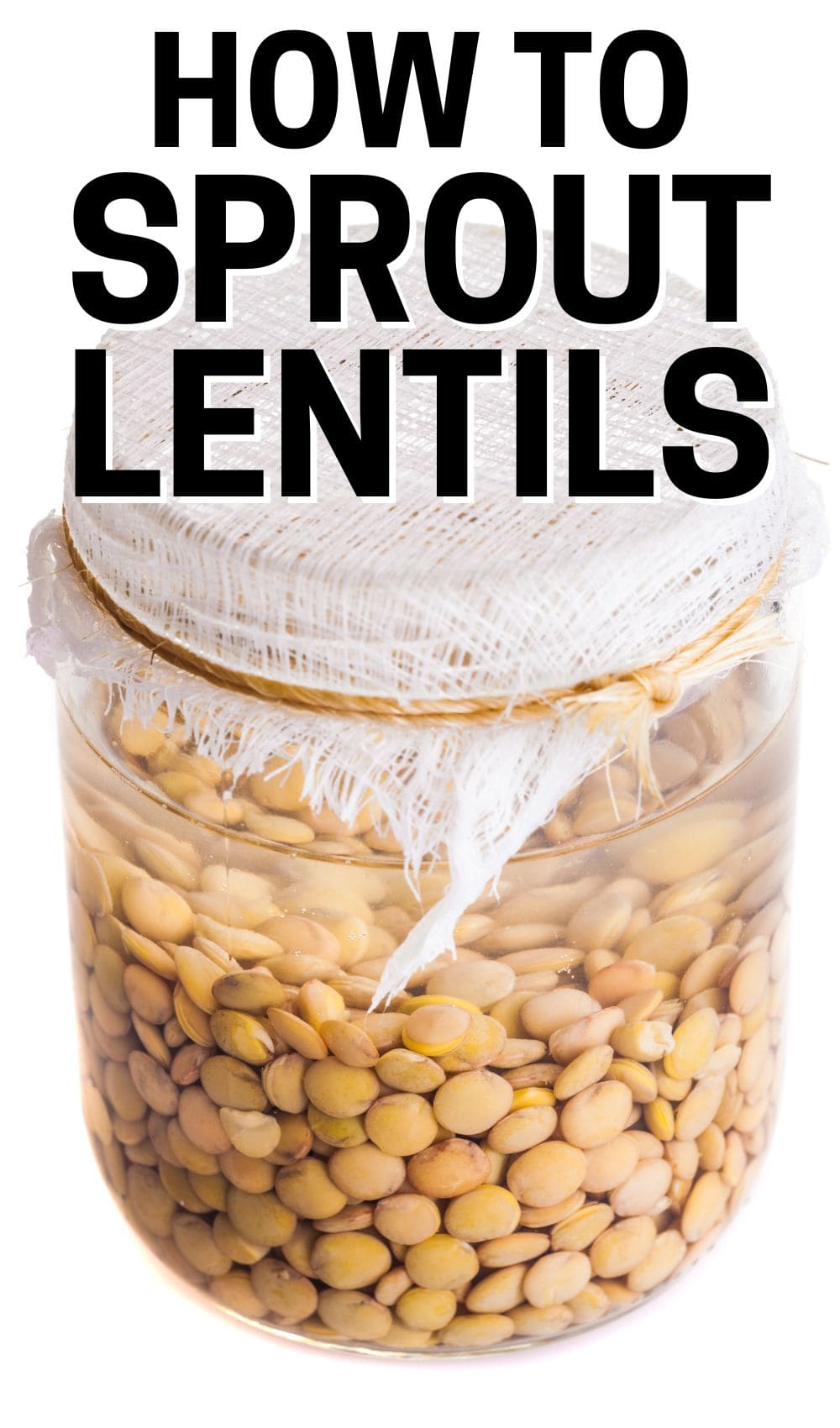





I happened to find your comments today. It is supposed to rain to night. I’ve spent 4 1/2 hours in my garden pl anting seeds. Now I’m going to put in edible flowers. My t omatoes are about 12″ high. I want my news letter! thanks